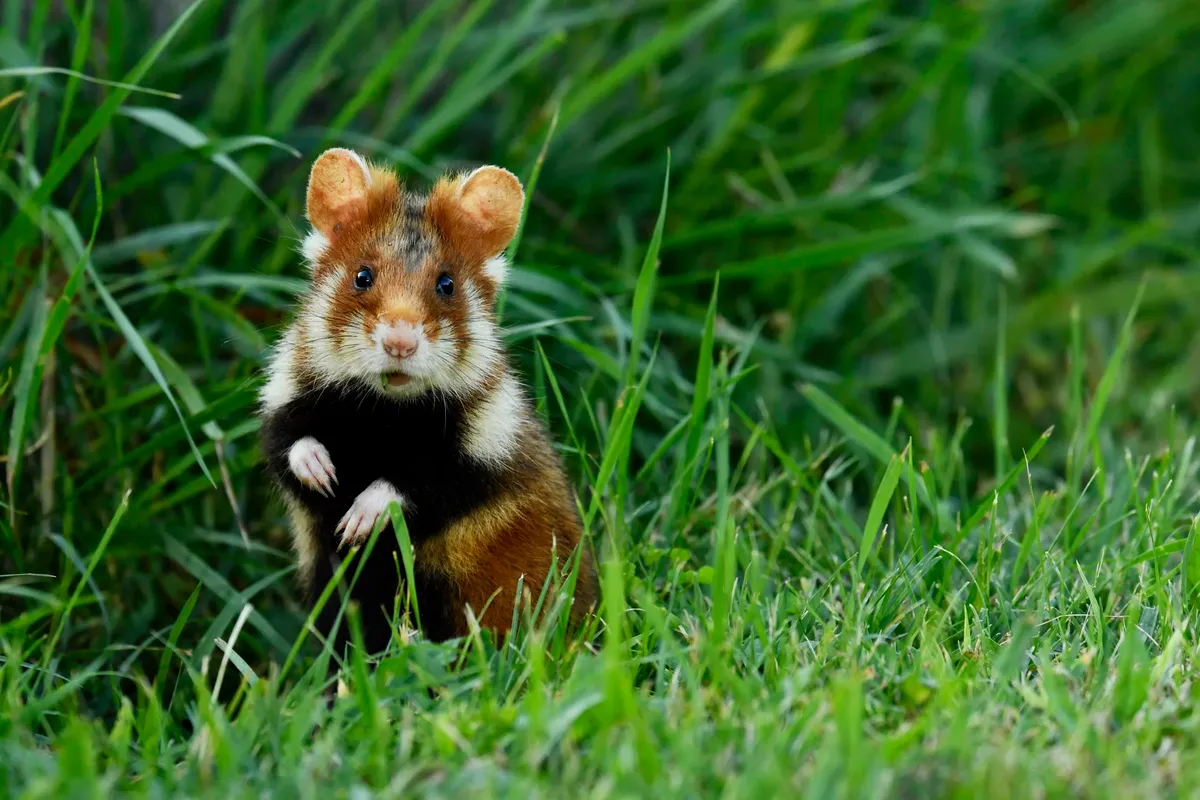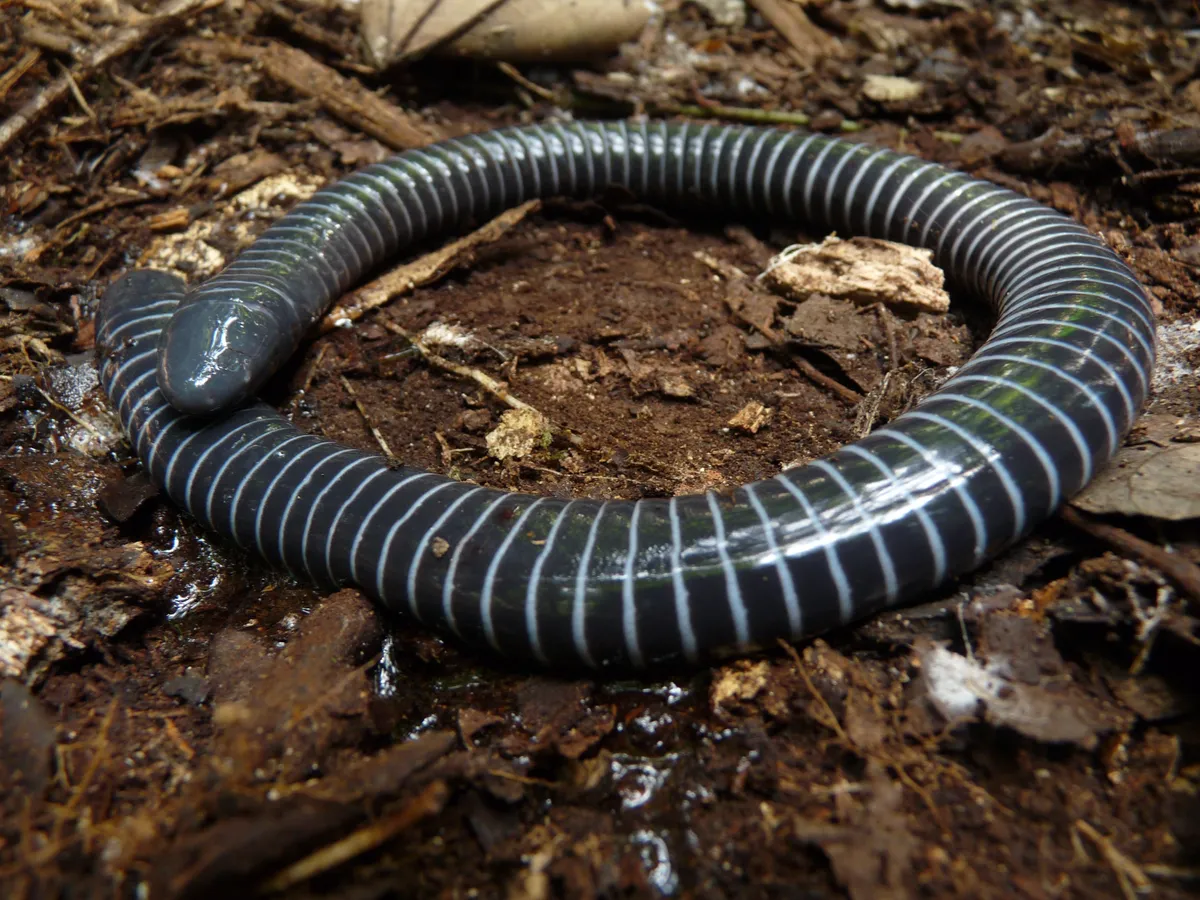Cannibalism – the act of eating an individual of the same species – is often not a good idea, and not just because of our own human morals. It can lead to the spread of some very nasty diseases, as well as the evolutionary cost of potentially eating your own kin.
However, it is not as rare as you might think. In fact, it has been recorded in more than 1,500 species, and as with all behaviours, there is often a good evolutionary reason behind it. These reasons are varied, and cannibalism can take a few different forms, read on to find out more.
11 cannibal animals
1. Chimpanzees (Pan troglodytes)

Although primarily herbivorous, chimpanzees do enjoy eating meat occasionally, hunting for monkeys and bush pigs. Their tastes can be even closer to home, however. We may not like to think of our closest animal relatives indulging in something so gruesome but they sometimes feed on their own too.
This primarily takes the form of eating newborn infants. It is thought that male chimpanzees do this when they don’t think they are the father, to free up breeding opportunities from new females, and to outcompete other males.
Please note that external videos may contain ads:
2. Lions (Panthera leo)

Another species which kills babies of its own kind is the lion. When a new male takes over a pride he will commonly kill any existing cubs, as he doesn't want to become a ‘step-father’, investing resources into young that aren't his own. It also means that he can breed with the mothers more quickly. Occasionally, but not always, this will involve cannibalism.
3. Hippopotamus (Hippopotamus amphibius)

Hippos are another species that occasionally carry out this ‘strategic infanticide’. They are not known to eat the babies, however. Instead they have been recorded eating the corpses of other adults. This is especially surprising given that they are primarily herbivores. Scientists suspect that this behaviour is borne out of extreme need, when other, safer food is scarce.
4. Hamsters (Cricetidae family)

Yes, that's right, even your cute little pet hamster is capable of cannibalism. Mothers are known to sometimes eat their own newborn babies, both in captivity and the wild. It is thought that they do this only when they are deficient in important vitamins and minerals. As with hippos, it is a gruesome solution to a problem of extreme scarcity. Occasionally the costs of damaging your own breeding success are worth the benefits of a meal.
5. Crab spiders (Thomisidae family)

So far we have talked about animals eating their own babies, but sometimes it happens the other way around. In order to ensure the survival of her brood, a female crab spider will offer up her own body as a meal. This behaviour is known as matriphagy and is in fact a fairly common evolved strategy of ensuring your genes are successfully passed on. It is practised mainly by insects and arachnids.
6. Caecilians (Gymnophiona order)

Aside from spiders and insects there is another species that also practises matriphagy - caecilians. These elusive underground creatures are actually limbless amphibians. Unlike the crab spiders, the cost of their cannibalism is not death, as they produce a special outer layer of skin, rich in fat and nutrients, for their babies to eat. The young will rip off and eat this skin with specially adapted teeth, and the skin then grows back, being replaced every three days. This allows the young to grow very quickly.
7. Cane toads (Rhinella marina)

As well as cannibalism occurring between mothers and young, it can also happen between siblings. This is the case with tadpoles of cane toads, wherein larger tadpoles will feast upon their just-hatched younger brothers and sisters.
This behaviour has been seen most commonly in Australia, where cane toads are an invasive and destructively abundant species. The cannibalism is thought to be a response to within-species competition for resources, as they do not have any other competitors. Interestingly the behaviour reveals a case of fast evolutionary adaptation, as Australian tadpoles have started to mature much faster than their native South American counterparts. In doing so they reduce the risk of becoming a snack for their older siblings, as only small tadpoles are eaten.
More on invasive and non-native species:
8. Praying mantis (Mantodea order)

In perhaps one of the best known examples of animal cannibalism, praying mantis females will often eat male mantises immediately after breeding. She will first bite off his head, then move on to consuming the rest of the body. This is known as ‘sexual cannibalism’ and is not just practised by mantises, but many other insects and arachnids too. It is thought that this functions to boost their fertility, as those females which engage in it tend to produce more eggs. Although it may not look like it, this (in an evolutionary sense) can be beneficial for the male also.
Please note that external videos may contain ads:
9. Black widow spiders (Latrodectus genus)

Another animal that regularly exhibits sexual cannibalism is the black widow spider, one of the deadliest spider in the world. The females of this venomous arachnid genus will commonly devour the much smaller males, sometimes mid-copulation. It is this penchant which inspired the name ‘widow’. Although sometimes they try to escape, a lot of the time males accept their grim fate, or are even willing participants. In an act called ‘copulatory suicide’ some males will actually somersault into the waiting females’ jaws!
10. Polar bears (Ursus maritimus)

In some cases cannibalism can emerge or increase in a previously rarely-cannibalistic species in response to extreme environmental pressures. This is sadly the case for some polar bears. Although cannibalism is not unheard of in these Arctic bears, it was once rare. In recent years however there have been more and more recorded cases of bear-on-bear attacks, with the loser being eaten after death.
This increase is thought to be due to the effect of climate change on their normal food supply and hunting activities. Melting of sea ice means that they have fewer platforms to hunt from, and so become malnourished and have to resort to eating their own species.
11. Snakes

Some snakes are cannibalistic. An internet search will yield videos of black-headed pythons, copperheads and small-eyed snakes all making a meal of one of their own. Male Cape cobras have been documented eating rivals, and male king cobras eating females, while in the south of France, male Montpellier snakes eat the females outside of the mating season.





